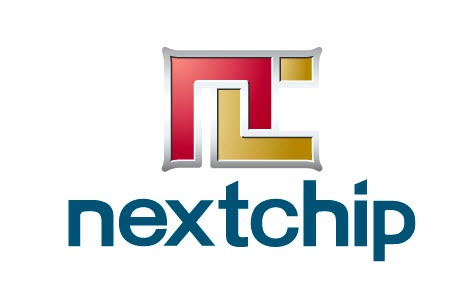DETROIT, June 27, 2022 /PRNewswire/ — Lambert, a public relations, investor relations, and integrated communications agency, today announced that industry veteran Katie Merx joined the company as Managing Director of Automotive and Mobility. In this role, Merx will lead strategy, growth and account management initiatives for clients up and down the automotive and mobility supply… Continue reading LAMBERT HIRES AWARD-WINNING JOURNALIST KATIE MERX TO LEAD ITS AUTOMOTIVE AND MOBILITY TEAM
Tag: Mobility
National Safety Council Urges Safe Driving this Independence Day Weekend
Analysis predicts 462 preventable deaths on U.S. roadways July 1-4 ITASCA, Ill., June 27, 2022 /PRNewswire/ — The National Safety Council estimates 462 people may lose their lives on U.S. roads during Independence Day weekend in preventable crashes. According to newly released estimates from the National Highway Traffic Safety Administration, U.S. roads are the most dangerous they’ve… Continue reading National Safety Council Urges Safe Driving this Independence Day Weekend
L-Charge plans to accelerate the deployment of EV Charging Infrastructure in Europe
L-Charge solutions remove this obstacle and offer companies from key sectors, including leisure and hospitality, retail, car manufacturing, vehicle rental and fleet management unique advantages such as ultra-fast charging speeds, cost-effectiveness, resilience, and the ability to significantly enhance their sustainability credentials. L-Charge offers its charging stations in three formats including a fixed, mobile and floating… Continue reading L-Charge plans to accelerate the deployment of EV Charging Infrastructure in Europe
Global Off-Highway Fuel Cell Electric Equipment (FCEE) Market Growth Opportunities to 2030
DUBLIN, June 27, 2022 /PRNewswire/ — The “Global Off-Highway Fuel Cell Electric Equipment (FCEE) Growth Opportunities” report has been added to ResearchAndMarkets.com’s offering. Key Issues Addressed What will be the estimated OHW vehicles market size (in vehicle units) by 2030? What are the key equipment categories and OEMs in the market? What are the current hydrogen… Continue reading Global Off-Highway Fuel Cell Electric Equipment (FCEE) Market Growth Opportunities to 2030
New Analysis from Global Industry Analysts Reveals Steady Growth for Automotive Artificial Intelligence, with the Market to Reach $12.9 Billion Worldwide by 2026
Global competitiveness and key competitor percentage market shares Market presence across multiple geographies – Strong/Active/Niche/Trivial Online interactive peer-to-peer collaborative bespoke updates Access to our digital archives and MarketGlass Research Platform Complimentary updates for one year Edition: 4; Released: January 2022 Executive Pool: 666 Companies: 42 – Players covered include AImotive; Alphabet Inc.; Audi AG; Bayerische Motoren Werke AG; Daimler AG;… Continue reading New Analysis from Global Industry Analysts Reveals Steady Growth for Automotive Artificial Intelligence, with the Market to Reach $12.9 Billion Worldwide by 2026
Öhlins® Racing Business Enters Technical Partnership With Scuderia Ferrari F1 Team
UPPLANDS VÄSBY, Sweden, June 27, 2022 /PRNewswire/ — Ӧhlins® Racing, a subsidiary of Tenneco Inc, has entered into a technical partnership with Scuderia Ferrari, which campaigns the two F1-75 cars – driven by Charles Leclerc and Carlos Sainz – in the Formula One World Championship. Ӧhlins is one of the most respected brands in motorsports and… Continue reading Öhlins® Racing Business Enters Technical Partnership With Scuderia Ferrari F1 Team
German Handelsblatt: Luxury strategy: Mercedes is dropping the A-Class – a turning point that triggers criticism004545
A-class sedan from Mercedes-Benz From the middle of the decade, the group will no longer build the model series. (Photo: Daimler AG) For decades, size was what counted most at Mercedes-Benz. The dream of the “Welt AG” with Chrysler burst abruptly, but the brand with the three-pointed star was later able to console itself by… Continue reading German Handelsblatt: Luxury strategy: Mercedes is dropping the A-Class – a turning point that triggers criticism004545
German Handelsblatt: Comment: Mercedes was never a brand for the masses004544
Mercedes The luxury bet dared by CEO Ola Källenius. (Photo: imago images/Arnulf Hettrich) Shorten supply, increase prices, arouse desire: Mercedes-Benz is fully committed to luxury and even deleted the A-Class from its portfolio in the middle of the decade. For some, this comes as a shock. With the end of the best-selling model with the… Continue reading German Handelsblatt: Comment: Mercedes was never a brand for the masses004544
Nextchip develops battery management chip for vehicles… Complete by 2024
Nextchip is developing a battery monitoring integrated chip (BMIC) for vehicles. It is the first time Nextchip, which focused on semiconductors used in autonomous vehicles, develops BMIC. Nextchip will complete development in 2024 with the goal of supplying global finished vehicles. Nextchip has started developing a BMIC that manages electric vehicle batteries by partnering with… Continue reading Nextchip develops battery management chip for vehicles… Complete by 2024
German Handelsblatt: Luxury strategy: Mercedes is dropping the A-Class – a turning point that triggers criticism004543
A-class sedan from Mercedes-Benz From the middle of the decade, the group will no longer build the model series. (Photo: Daimler AG) For decades, size was what counted most at Mercedes-Benz. The dream of the “Welt AG” with Chrysler burst abruptly, but the brand with the three-pointed star was later able to console itself by… Continue reading German Handelsblatt: Luxury strategy: Mercedes is dropping the A-Class – a turning point that triggers criticism004543
